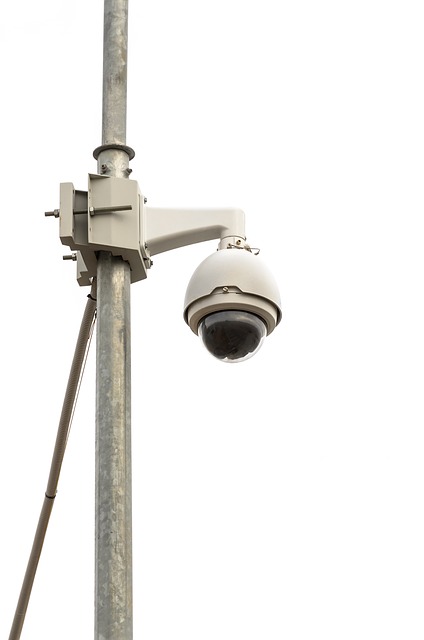IP security cameras have transformed surveillance with real-time video streaming, remote access, and automated alerts via the internet. Unlike analog systems, they offer high-definition video, advanced zoom, and two-way audio, enabling more efficient monitoring and faster incident resolution. Automated notifications ensure swift action during potential breaches or emergencies, significantly enhancing response times in security-critical environments. By leveraging advanced technology for anomaly detection and immediate alert triggering, these systems empower organizations to maintain a proactive security posture. Efficient alert strategies, tailored to specific events and delivered promptly to relevant personnel, further enhance the effectiveness of IP security camera systems across various industries.
In today’s digital era, quick response times are critical for effective surveillance. This article explores the transformative power of automated alerts and notifications in enhancing IP security camera systems. We delve into how these advanced features facilitate real-time monitoring, enabling swift actions to potential threats. From understanding the core functions of IP security cameras to implementing efficient alert systems and highlighting success stories, this guide offers valuable insights for leveraging automated alerts in modern surveillance.
Understanding IP Security Cameras and Their Role in Modern Surveillance
IP security cameras have transformed modern surveillance, offering advanced features that traditional analog systems lack. These smart cameras are connected to the internet, enabling real-time video streaming and remote access from anywhere with an internet connection. With their ability to send automated alerts and notifications upon detecting motion or unusual activity, they play a pivotal role in quick response situations.
Unlike their analogue counterparts, IP security cameras provide high-definition video footage, advanced zoom capabilities, and the option for two-way audio communication. This technology allows for more efficient monitoring, better evidence capture, and faster incident resolution. Automated alerts can alert security personnel or authorities immediately, ensuring swift action is taken in potential security breaches or emergency situations.
The Benefits of Automated Alerts and Notifications for Quick Response Times
Automated alerts and notifications play a pivotal role in enhancing response times, particularly in environments where security is paramount, such as those utilizing IP security cameras. By leveraging advanced technology, these systems can detect anomalies or pre-defined events almost instantaneously, triggering immediate alerts that reach authorized personnel promptly. This real-time capability allows for swift action, enabling security teams to address potential threats or incidents before they escalate.
Moreover, automated alerts provide a level of consistency and reliability not always achievable through manual monitoring. They ensure no incident goes unnoticed, reducing response times and minimizing the risk of human error. This is especially crucial in large facilities with multiple camera feeds, where continuous manual surveillance would be impractical. Automated notifications empower organizations to maintain a proactive security posture, enhancing overall operational efficiency.
Implementing Efficient Alert Systems: Strategies and Best Practices
Implementing efficient alert systems is paramount for organizations aiming to streamline their response times, especially in scenarios involving IP security cameras. The key lies in tailoring alerts to specific events and ensuring they are delivered promptly to relevant personnel. Strategies include configuring camera settings to detect and trigger alerts based on motion, object recognition, or unusual behavior. Integrating these alerts with existing security protocols allows for a coordinated response.
Best practices involve testing and refining alert thresholds to avoid false positives while ensuring genuine incidents prompt immediate action. Employing smart notifications that provide context—such as camera location, event type, and timestamp—enables security teams to assess situations swiftly. Additionally, implementing mobile alerts ensures personnel can respond from anywhere, enhancing the overall effectiveness of the security system.
Real-World Applications: Success Stories and Future Prospects of Automated Camera Alerts
In today’s digital era, automated alerts and notifications for quick response systems have revolutionized various industries. One prominent application is seen in the use of IP security cameras, which have transformed how we monitor and secure our spaces. These advanced cameras are equipped with intelligent features that enable them to detect unusual activities or events, triggering instant alerts to relevant authorities or designated individuals.
Success stories abound in sectors like retail, where automated camera alerts have significantly reduced shoplifting incidents, enhancing store security and protecting businesses from financial losses. Similarly, in healthcare facilities, these systems can monitor patient activity, alerting staff promptly in case of emergencies. As technology advances, the future prospects for automated camera alerts look promising, with potential integrations into smart cities and home security systems, further improving public safety and privacy.
IP security cameras, with their ability to automate alerts and notifications, are transforming modern surveillance. By leveraging these advanced features, organizations can achieve significant improvements in response times, enabling quicker decision-making and enhanced situational awareness. Through implementing efficient alert systems and adopting best practices, entities can maximize the benefits of automated camera alerts. Real-world applications have already showcased their potential, and as technology advances, we can expect even more innovative uses shaping the future of surveillance.
